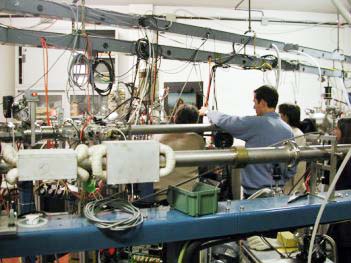- Home
- Visit
- Explore
- Play
- Discover
- Madonna of the Yarnwinder (The Lansdowne Madonna)
- As revealed by science
- Background
- Visual history
- Bibliography
- Browse
- Research
- About Us
Particle Induced X-ray Emission (PIXE)
There are two types of non-invasive technical analysis which, using Xe gamma radiations, provide information on the chemical composition of pigments. These are x-ray fluorescence (XRF) and particle induced X-ray emission (PIXE) together with PIGE.
XRF picks up information on the heavier materials; PIXE and PIGE on lighter materials. PIGE introduces gamma detectors as a way to regain the clarity of analysis lost by the interference of varnish present on the top layer of a painting.
Under PIXE and PIGE examination, the following interesting points were revealed:
· The use of an ink-like substance was detected in the brown rocky areas of the painting. This suggests a very unusual approach that is quite in keeping with Leonardo’s experimental nature.
· The high presence of iron in the pigment on the area around the Madonna’s knee suggests that the possible indication of a basket in the underdrawing may actually have been partially painted, thereby raising it above the status of mere underdrawing. The surface colour of the painting in this area is covered in blue. (Iron is not associated with blue pigment, except in modern pigments such as Prussian blue, which was not available when Leonardo was painting.)
· The abundance of lead white suggests that, even under close analysis, it may actually have been part of the original preparation for the painting and not a result of the transfer process. This was a truly innovative approach for the time.


